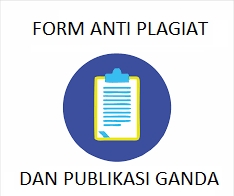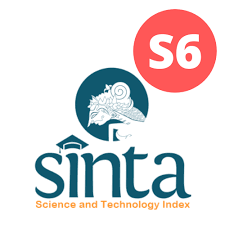Role of Microbes in Plant Growth and Food Preservation
Abstract
- Introduction: Microbes perform better functions for agricultural production by promoting various direct and indirect mechanisms in soil and plants. If agricultural development is to satisfy the needs of an increasing global population, a deeper understanding of soil microbiology is needed. Furthermore, microbial biota such as yeast, bacteria etc., plays a significant role in food preservation by various mechanisms.
- Review results: Despite their pathogenicity, microbes play a substantial role in dispensing an assortment of fermented drinks and foods in the food industry and home. Probiotics, fermented foods and alcoholic beverages are flattering extra popular due to their health benefits and flavour. Furthermore, they increase the yield and growth of plants by improving mineral availability to the plants and by another mechanism.
- Review implementation: This present review also discusses the various organisms used in the agricultural processing of beverages and food and the benefits of using the following microbes in the beverage and food industry.
Downloads
References
Ahmad, F., Ahmad, I., & Khan, M. S. (2008). Screening of free-living rhizospheric bacteria for their multiple plant growth promoting activities. Microbiological Research, 163(2), 173-181. https://doi.org/10.1016/j.micres.2006.04.001.
Amara, M. A., & Dahdoh, M. S. A. (1995). Effect of inoculation with plant-growth promoting rhizobacteria, Pgpr on yield and uptake of nutrients by wheat grown on sandy soil. In 5. National Congress on Bio-Agriculture in Relation to Environment, Cairo (Egypt), 20-21 November 1995.
Amin, S. A., Ahmed, A. I., Sidiq, S. A., & Mahmood, H. A. (2017). Biological control of post-harvest disease of blue mould (Penicillium expansum) of pear fruit by using antagonist microorganisms under laboratory and cold storage conditions. International Journal of Current Research in Biosciences and Plant Biology, 4(1), 20-31. http://dx.doi.org/10.20546/ijcrbp.2017.401.004.
Asghar, H., Zahir, Z., Arshad, M., & Khaliq, A. (2002). Relationship between in vitro production of auxins by rhizobacteria and their growth-promoting activities in Brassica juncea L. Biology and Fertility of Soils, 35(4), 231-237. https://doi.org/10.1007/s00374-002-0462-8.
Barus, N. S. B., Sony, S., Salman, S., Mahmudi, M., & Sunartaty, R. (2018). Uji Toksisitas Subakut Ekstrak Daun Tembakau (Nicotiana Tabacum L.) Yang Difermentasi Terhadap Gambaran Histologi Organ Vital Mencit (Mus Musculus). Jurnal Stikna, 2(2).
Berg, M. P., Kiers, E. T., Driessen, G., Van Der Heijden, M., Kooi, B. W., Kuenen, F., Liefting, M., Verhoef, H. A., & Ellers, J. (2010). Adapt or disperse: understanding species persistence in a changing world. Global Change Biology, 16(2), 587-598. https://doi.org/10.1111/j.1365-2486.2009.02014.x.
Bossio, D. A., Scow, K. M., Gunapala, N., & Graham, K. J. (1998). Determinants of soil microbial communities: effects of agricultural management, season, and soil type on phospholipid fatty acid profiles. Microbial ecology, 36(1), 1-12. https://doi.org/10.1007/s002489900087.
Brown, G. G., Barois, I., & Lavelle, P. (2000). Regulation of soil organic matter dynamics and microbial activityin the drilosphere and the role of interactionswith other edaphic functional domains. European Journal of Soil Biology, 36(3-4), 177-198. https://doi.org/10.1016/S1164-5563(00)01062-1.
Caplice, E., & Fitzgerald, G. F. (1999). Food fermentations: role of microorganisms in food production and preservation. International Journal of Food Microbiology, 50(1-2), 131-149. https://doi.org/10.1016/S0168-1605(99)00082-3.
Ch, B. I., Gondal, A. H., Zafar, H., Umar, H., Toor, M. D., Zafar, A., Farooq, Q., & Saeed, S. (2021). A brief correspondence on glyphosate remediation using microbes and mineral sources. Annals of Reviews and Research, 6(4), 555693. http://dx.doi.org/10.19080/ARR.2021.06.555693.
Choudhary, M., Kumar, R., Datta, A., Nehra, V., & Garg, N. (2017). Bioremediation of heavy metals by microbes. In Bioremediation of salt affected soils: an Indian perspective (pp. 233-255). Springer, Cham. https://doi.org/10.1007/978-3-319-48257-6_12.
Colica, G., Li, H., Rossi, F., Li, D., Liu, Y., & De Philippis, R. (2014). Microbial secreted exopolysaccharides affect the hydrological behavior of induced biological soil crusts in desert sandy soils. Soil Biology and Biochemistry, 68, 62-70. https://doi.org/10.1016/j.soilbio.2013.09.017.
Compant, S., Clément, C., & Sessitsch, A. (2010). Plant growth-promoting bacteria in the rhizo-and endosphere of plants: their role, colonization, mechanisms involved and prospects for utilization. Soil Biology and Biochemistry, 42(5), 669-678. https://doi.org/10.1016/j.soilbio.2009.11.024.
Couto, J. A., Neves, F., Campos, F., & Hogg, T. (2005). Thermal inactivation of the wine spoilage yeasts Dekkera/Brettanomyces. International Journal of Food Microbiology, 104(3), 337-344. https://doi.org/10.1016/j.ijfoodmicro.2005.03.014.
Dasopang, E. S., Hasanah, F., Fauziah, I., Salman, S., & Bakri, T. K. (2020). Potential side effects of medicine on patients with tuberculosis fixed-dose combination in dr. Pirngadi Hospital, Medan. Jurnal Natural, 20(1), 10-14.
Dogan, B., & Boor, K. J. (2003). Genetic diversity and spoilage potentials among Pseudomonas spp. isolated from fluid milk products and dairy processing plants. Applied and Environmental Microbiology, 69(1), 130-138. https://doi.org/10.1128/AEM.69.1.130-138.2003.
Egamberdiyeva, D. (2007). The effect of plant growth promoting bacteria on growth and nutrient uptake of maize in two different soils. Applied Soil Ecology, 36(2-3), 184-189. https://doi.org/10.1016/j.apsoil.2007.02.005.
Egli, M., Wernli, M., Burga, C., Kneisel, C., Mavris, C., Valboa, G., Mirabella, A., Plötze, M., & Haeberli, W. (2011). Fast but spatially scattered smectite-formation in the proglacial area Morteratsch: An evaluation using GIS. Geoderma, 164(1-2), 11-21. https://doi.org/10.1016/j.geoderma.2011.05.001.
Elez-Martinez, P., Escola-Hernandez, J., Soliva-Fortuny, R. C., & Martin-Belloso, O. (2004). Inactivation of Saccharomyces cerevisiae suspended in orange juice using high-intensity pulsed electric fields. Journal of Food Protection, 67(11), 2596-2602. https://doi.org/10.4315/0362-028X-67.11.2596.
Erkmen, O., & Bozoglu, T. F. (2016). Food Microbiology, principles into practice. John Wiley & Sons.
Etebu, E., Nwauzoma, A. B., & Bawo, D. D. S. (2013). Postharvest spoilage of tomato (Lycopersicon esculentum Mill.) and control strategies in Nigeria. Journal of Biology, Agriculture and Healthcare, 3(10), 51-61.
FAO. (2017). Voluntary guidelines for sustainable soil management. Food and Agriculture Organization of the United Nations, Rome, Italy. Available online: http://www.fao.org/documents/card/en/c/5544358d-f11f-4e9f-90ef-a37c3bf52db7/.
Fatima, N., Batool, H., Sultana, V., Ara, J., & Ehteshamul-Haque, S. (2009). Prevalence of post-harvest rot of vegetables and fruits in Karachi, Pakistan. Pakistan Journal of Botany, 41(6), 3185-3190.
Friesen, M. L., Porter, S. S., Stark, S. C., von Wettberg, E. J., Sachs, J. L., & Martinez-Romero, E. (2011). Microbially mediated plant functional traits. Annual Review of Ecology, Evolution, and Systematics, 42, 23-46. https://doi.org/10.1146/annurev-ecolsys-102710-145039.
Gondal, A. H., Hussain, I., Ijaz, A. B., Zafar, A., Ch, B. I., Zafar, H., Sohail, M. D., Khan, A. A., Niazi, H., Yousaf, H., Usama, M., Touseef, M., & Tariq, M. (2021b). Influence of soil pH and microbes on mineral solubility and plant nutrition: A review. International Journal of Agriculture and Biological Sciences, 5(1), 71-81. http://dx.doi.org/10.5281/zenodo.4625364.
Gondal, A. H., Zafar, A., Toor, M. D., Ijaz, A. B., Sohail, S., Ch, B. I., Nawaz, T., Haider, S., Ahmad, I. A., Dua-e-Zainab., Rehman, B., Qasim, M., Shah, M. S., & Rehman, M. U. (2021c). Alleviation of zinc deficiency from humans through plants by organic sources: A powerful tonic. International Journal of Applied Research, 7(4), 240-243.
Gondal, A. H., Zafar, A., Zainab, D., Toor, M. D., Sohail, S., Ameen, S., Ijaz, A. B., Ch, B. I., Hussain, I., Haider, S., Ahmad, I. A., Rehman, B., & Younas, N. (2021a). A detailed review study of zinc involvement in animal, plant and human nutrition. Indian Journal of Pure & Applied Biosciences, 9(2), 262-271.
Gondal, A. H., Zafar, A., Zainab, D., Toor, M. D., Sohail, S., Ameen, S., Ijaz, A. B., Ch, B. I., Hussain, I., Haider, S., Ahmad, I. A., Rehman, B., & Younas, N. (2021d). Adaptability of soil pH through innovative microbial approach. Current Research in Agricultural Sciences, 8(2), 71-79.
Graham, P. H., & Vance, C. P. (2003). Legumes: importance and constraints to greater use. Plant Physiology, 131(3), 872-877. https://doi.org/10.1104/pp.017004.
Hardy, S. (2002). Human microbiology. Taylor & Francis, London.
Haroon, A., Yaseen, T., Husnain, A., Mehfooz, M., Jarar, M. H., Naveed, U., & Khalid, F. (2020). Water resources helps in the expansion of mosquitoes colonies. Big Data In Water Resources Engineering (BDWRE), 1(1), 16-21. http://dx.doi.org/10.26480/bdwre.01.2020.16.21.
Hayat, R., Ali, S., Amara, U., Khalid, R., & Ahmed, I. (2010). Soil beneficial bacteria and their role in plant growth promotion: a review. Annals of Microbiology, 60(4), 579-598. https://doi.org/10.1007/s13213-010-0117-1.
Hilali, A., Prévost, D., Broughton, W. J., & Antoun, H. (2001). Effets de l'inoculation avec des souches de Rhizobium leguminosarum biovar trifolii sur la croissance du blé dans deux sols du Maroc. Canadian Journal of Microbiology, 47(6), 590-593. https://doi.org/10.1139/w01-068.
Hubbell, D. H., & Kidder, G. (1998). Biological nitrogen fixation. University of Florida Cooperative Extension Service, Institute of Food and Agriculture Sciences, EDIS.
Istina, I. N., Widiastuti, H., Joy, B., & Antralina, M. (2015). Phosphate-solubilizing microbe from Saprists peat soil and their potency to enhance oil palm growth and P uptake. Procedia Food Science, 3, 426-435. https://doi.org/10.1016/j.profoo.2015.01.047.
Jowkar, M. M., Kafi, M., Khalighi, A., & Hasanzadeh, N. (2012). Postharvest physiological and microbial impact of hydroxy quinoline citrate as ‘Cherry Brandy’rose vase solution biocide. Annals of Biological Research, 3(5), 2238-2247.
Kasim, W. A., Osman, M. E., Omar, M. N., Abd El-Daim, I. A., Bejai, S., & Meijer, J. (2013). Control of drought stress in wheat using plant-growth-promoting bacteria. Journal of Plant Growth Regulation, 32(1), 122-130. https://doi.org/10.1007/s00344-012-9283-7.
Koch, A. L. (1990). Growth and form of the bacterial cell wall. American Scientist, 78(4), 327-341. https://www.jstor.org/stable/29774119?seq=1.
Kumar, A., & Verma, J. P. (2019). The role of microbes to improve crop productivity and soil health. In Ecological Wisdom Inspired Restoration Engineering (pp. 249-265). Springer, Singapore. https://doi.org/10.1007/978-981-13-0149-0_14.
Law, S. E., & Cooper, S. C. (2001). Air-assisted electrostatic sprays for postharvest control of fruit and vegetable spoilage microorganisms. IEEE Transactions on Industry Applications, 37(6), 1597-1602. https://doi.org/10.1109/28.968166.
Liao, W., Ho, C. Y., Yan, Y. L., Postlethwait, J., & Stainier, D. Y. (2000). Hhex and scl function in parallel to regulate early endothelial and blood differentiation in zebrafish. Development, 127(20), 4303-4313. https://doi.org/10.1242/dev.127.20.4303.
Lombard, N., Prestat, E., van Elsas, J. D., & Simonet, P. (2011). Soil-specific limitations for access and analysis of soil microbial communities by metagenomics. FEMS Microbiology Ecology, 78(1), 31-49. https://doi.org/10.1111/j.1574-6941.2011.01140.x.
Los, B., & Timmer, M. P. (2018). Measuring bilateral exports of value added: a unified framework (No. w24896). National Bureau of Economic Research.
Mandrell, R. E., Gorski, L., & Brandl, M. T. (2005). Attachment of microorganisms to fresh produce. In Microbiology of fruits and vegetables (pp. 49-90). CRC Press.
Mendes, R., Garbeva, P., & Raaijmakers, J. M. (2013). The rhizosphere microbiome: significance of plant beneficial, plant pathogenic, and human pathogenic microorganisms. FEMS Microbiology Reviews, 37(5), 634-663. https://doi.org/10.1111/1574-6976.12028.
Mendes, R., Kruijt, M., de Bruijn, I., Dekkers, E., van der Voort, M., Schneider, J. H., Piceno, Y., DeSantis, T., Andersen, G., Bakker, P, A, H, M., & Raaijmakers, J. M. (2011). Deciphering the rhizosphere microbiome for disease-suppressive bacteria. Science, 332(6033), 1097-1100. https://doi.org/10.1126/science.1203980.
Miransari, M. (2011a). Soil microbes and plant fertilization. Applied Microbiology and Biotechnology, 92(5), 875-885. https://doi.org/10.1007/s00253-011-3521-y.
Miransari, M. (2011b). Interactions between arbuscular mycorrhizal fungi and soil bacteria. Applied Microbiology and Biotechnology, 89(4), 917-930. https://doi.org/10.1007/s00253-010-3004-6.
Postgate, J. R. (1982). The fundamentals of nitrogen fixation. New York: Cambridge University Press.
Qiao, Q., Wang, F., Zhang, J., Chen, Y., Zhang, C., Liu, G., Zhang, H., Ma, C., & Zhang, J. (2017). The variation in the rhizosphere microbiome of cotton with soil type, genotype and developmental stage. Scientific Reports, 7, 3940. https://doi.org/10.1038/s41598-017-04213-7.
Rakhmanova, A., Khan, Z. A., & Shah, K. (2018). A mini review fermentation and preservation: role of lactic acid bacteria. MOJ Food Processing & Technology, 6(5), 414-417.
Rashid, M. I., Mujawar, L. H., Shahzad, T., Almeelbi, T., Ismail, I. M., & Oves, M. (2016). Bacteria and fungi can contribute to nutrients bioavailability and aggregate formation in degraded soils. Microbiological Research, 183, 26-41. https://doi.org/10.1016/j.micres.2015.11.007.
Rawat, S. (2015). Food Spoilage: Microorganisms and their prevention. Asian Journal of Plant Science and Research, 5(4), 47-56.
Richardson, A. E., Barea, J. M., McNeill, A. M., & Prigent-Combaret, C. (2009). Acquisition of phosphorus and nitrogen in the rhizosphere and plant growth promotion by microorganisms. Plant and Soil, 321(1), 305-339. https://doi.org/10.1007/s11104-009-9895-2.
Rossi, F., & De Philippis, R. (2015). Role of cyanobacterial exopolysaccharides in phototrophic biofilms and in complex microbial mats. Life, 5(2), 1218-1238. https://doi.org/10.3390/life5021218.
Rossi, F., Olguín, E. J., Diels, L., & De Philippis, R. (2015). Microbial fixation of CO2 in water bodies and in drylands to combat climate change, soil loss and desertification. New Biotechnology, 32(1), 109-120. https://doi.org/10.1016/j.nbt.2013.12.002.
Saleha, S.; Salman; Saiful. (2013). Preparation and characterization edible film packaging from carrageenan. In Proceedings of The Annual International Conference, Syiah Kuala University-Life Sciences & Engineering Chapter (Vol. 3, No. 3).
Schnable, P. S., Ware, D., Fulton, R. S., Stein, J. C., Wei, F., Pasternak, S., et al., (2009). The B73 maize genome: complexity, diversity, and dynamics. Science, 326(5956), 1112-1115. https://doi.org/10.1126/science.1178534.
Seeling, B., & Zasoski, R. J. (1993). Microbial effects in maintaining organic and inorganic solution phosphorus concentrations in a grassland topsoil. Plant and Soil, 148(2), 277-284. https://doi.org/10.1007/BF00012865.
Semhi, K., Chaudhuri, S., Clauer, N., & Boeglin, J. L. (2008). Impact of termite activity on soil environment: A perspective from their soluble chemical components. International Journal of Environmental Science & Technology, 5(4), 431-444. https://doi.org/10.1007/BF03326039.
Shameer, S., & Prasad, T. N. V. K. V. (2018). Plant growth promoting rhizobacteria for sustainable agricultural practices with special reference to biotic and abiotic stresses. Plant Growth Regulation, 84(3), 603-615. https://doi.org/10.1007/s10725-017-0365-1.
Sofo, A., Mininni, A. N., & Ricciuti, P. (2020). Soil macrofauna: A key factor for increasing soil fertility and promoting sustainable soil use in fruit orchard agrosystems. Agronomy, 10(4), 456. https://doi.org/10.3390/agronomy10040456.
Srivastava, S. (2003). Understanding bacteria. Springer Science & Business Media.
Stelmach-Mardas, M., Rodacki, T., Dobrowolska-Iwanek, J., Brzozowska, A., Walkowiak, J., Wojtanowska-Krosniak, A., Zagrodzki, P., Bechthold, A., Mardas, M., & Boeing, H. (2016). Link between food energy density and body weight changes in obese adults. Nutrients, 8(4), 229. http://dx.doi.org/10.3390/nu8040229.
Suardi, M., Wangi, Q. A., Salman, Zaini, E., & Akmal, D. (2016). Microencapsulation of verapamil hydrochloride using poly (3-hidroxybutyrate) as coating materials by solvent evaporation method. Research Journal of Pharmaceutical Biological and Chemical Sciences, 7(1), 1725-1732.
Sulaiman, T. N. S., & Sulaiman, S. (2020). Eksipien Untuk Pembuatan Tablet Dengan Metode Kempa Langsung. Journal of Pharmaceutical and Sciences, 3(2), 64-76.
Van Der Heijden, M. G. A., Bardgett, R. D., & Van Straalen, N. M. (2008). The unseen majority: soil microbes as drivers of plant diversity and productivity in terrestrial ecosystems. Ecology Letters, 11(3), 296-310. https://doi.org/10.1111/j.1461-0248.2007.01139.x.
Verbon, E. H., & Liberman, L. M. (2016). Beneficial microbes affect endogenous mechanisms controlling root development. Trends in Plant Science, 21(3), 218-229. https://doi.org/10.1016/j.tplants.2016.01.013.
Verma, J. P., Yadav, J., Tiwari, K. N., & Kumar, A. (2013). Effect of indigenous Mesorhizobium spp. and plant growth promoting rhizobacteria on yields and nutrients uptake of chickpea (Cicer arietinum L.) under sustainable agriculture. Ecological Engineering, 51, 282-286. https://doi.org/10.1016/j.ecoleng.2012.12.022.
Verma, S., Marshall, J., Gerbig, C., Rödenbeck, C., & Totsche, K. U. (2017). The constraint of CO2 measurements made onboard passenger aircraft on surface–atmosphere fluxes: the impact of transport model errors in vertical mixing. Atmospheric Chemistry and Physics, 17(9), 5665-5675. https://doi.org/10.5194/acp-17-5665-2017.
Veum, K. S., Goyne, K. W., Kremer, R. J., Miles, R. J., & Sudduth, K. A. (2014). Biological indicators of soil quality and soil organic matter characteristics in an agricultural management continuum. Biogeochemistry, 117(1), 81-99. https://doi.org/10.1007/s10533-013-9868-7.
Wani, F. S., Ahmad, L., Ali, T., & Mushtaq, A. (2015). Role of microorganisms in nutrient mobilization and soil health - a review. Journal of Pure and Applied Microbiology, 9(2), 1401-1410.
Yahaya, S. M., & Mardiyya, A. Y. (2019). Review of post-harvest losses of fruits and vegetables. Biomedical Journal of Scientific & Technical Research, 13(4), 10192-10200. http://dx.doi.org/10.26717/BJSTR.2019.13.002448.
Zaidi, S., Usmani, S., Singh, B. R., & Musarrat, J. (2006). Significance of Bacillus subtilis strain SJ-101 as a bioinoculant for concurrent plant growth promotion and nickel accumulation in Brassica juncea. Chemosphere, 64(6), 991-997. https://doi.org/10.1016/j.chemosphere.2005.12.057.
Zhu, Y. G., Zhao, Y., Zhu, D., Gillings, M., Penuelas, J., Ok, Y. S., Capon, A., & Banwart, S. (2019). Soil biota, antimicrobial resistance and planetary health. Environment International, 131, 105059. https://doi.org/10.1016/j.envint.2019.105059.
Copyright (c) 2021 Agrinula : Jurnal Agroteknologi dan Perkebunan

This work is licensed under a Creative Commons Attribution-NonCommercial 4.0 International License.





